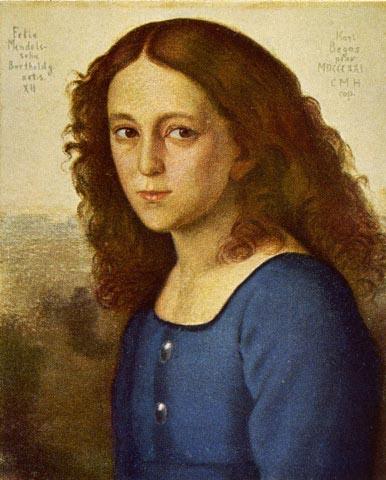Organ arrangements of two preludes and Fugues for piano
1 Prelude opus 7 nr 6, and a Fugue without opus number
2 Prelude and Fugue opus 35, nr.1
The young Mendelssohn was a musical prodigy, comparable at that age to Mozart.
He was classically educated, with a great interest in fugues as a result. As a child he played Bach's fugues to Goethe, perhaps even on the harpsichord (in a drawing the young Mendelssohn plays a keyboard instrument with a rectangular cheek, clearly a harpsichord). He wrote the fugues for piano in 1827. Later he supplemented them with introductory parts, initially called etudes, which use more pianistic techniques than the fugues and are therefore less suitable for playing on the organ. It is striking that the opus numbers of the Preludes and Fugues for piano and organ are close together: opus 35 and 37. He himself was less satisfied with the organ fugues. For organists the piano fugues are indeed much more interesting and an important addition to the repertoire.
The first fugue presented here is a brilliant work with a challenging theme. Without much effort, the pedal part could be distilled from the whole. The symmetrical form with two manualiter middle parts naturally offers the possibility of using a second keyboard. A work that was created in the same year was chosen as the Prelude. This part from opus 7 strongly resembles a Sarabande by Bach, which fits in well with the classically structured fugue.
The second arrangement takes over Mendelssohn's Prelude from the edition of opus 35. This work has a texture comparable to the final variation on the Vater Unser from the sixth organ sonata. The thumbs play in turn the melody, while the other fingers add broken chords.
The fugue is of the later known crescendo-accelerando model. Mendelssohn indicates fairly precisely when the tempo and dynamics should increase. The climax ends in a self-invented chorale, after which the work finally ends softly and in a major key.
For more information about these works, see the edition:
